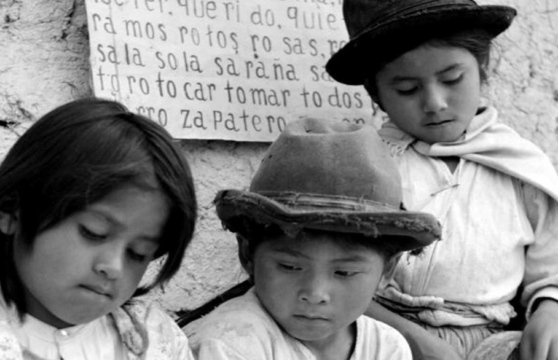High-quality Early Childcare = Later Academic Success?
Two documents suggest that investing in the early years of poor children is crucial to long-term success.
There is increasing interest in and support for investments in early childhood development. Nobel Prize laureate Jim Heckman has become one of the most vocal voices in the US around the world arguing that investing in the human capital of young children is a fiscally responsible way of reducing costs and promoting economic growth.
Many countries in Latin America are already expanding early education programs as a means of improving school readiness. This is often understood simply as establishing a large number of centers for early care. Is this the right approach? Will it yield the results that people like Jim Heckman are thinking about?
The Bill and Melinda Gates Foundation released a report in late September on High Quality Pre-K programs. I believe the report, prepared by Jim Minervino, is extremely important for countries in Latin America. It offers us some food for thought. It cautions us against efforts that expand center-based care without sufficient focus on quality.
The report reviews the literature on the quality of early learning in center-based early care, particularly for children from low-income families. A key message of the review is that low-quality programs not only don’t help children but also can have a negative impact on their school readiness. Only high quality programs have reliable and large positive effects on school readiness: the effects of moderate-quality programs (the majority of the programs poor children attend in the US) are limited and inconsistent.
An interesting finding of the report is that having children spend more time in high-quality settings yields improved academic outcomes.
The report considers both process quality (experiences children have in early care settings) and structural quality (conditions that must be present in those settings).
A key element of quality is the nature of the teacher-child interactions. There exist sophisticated methodologies and tools to measure this. For example, the Classroom Assessment Scoring System (CLASS) developed by the University of Virginia can be used to reliably assess classroom quality for research and program evaluation and also provides a tool to help new and experienced teachers become more effective.
As illustrated in the attached graph drawn from the report, the evidence shows the level of instructional quality—the cognitive demands teachers embed in their interactions with children—is very low in the US.
The report notes, however, that there are professional development models (online coaching, web-based video library, online and in-person courses) that make teachers effective with great consistency. In other words, it is possible to train teachers to be effective.
In terms of structural quality in early learning, the report finds that class sizes above 20 students and teacher-child ratios above 2:20 (one lead teacher, one aide, and 20 children in a classroom) are associated with poorer outcomes for young children.
Given the relationship between children’s school readiness and the quality of early learning children receive, the report concludes that: 1) Low-quality programs should be avoided or immediately improved to moderate-quality; 2) Moderate-quality programs should be improved into the high-quality range; and 3) High-quality programs should continuously improve to yield greater school-readiness outcomes.
I found the report both inspiring and cautionary: the payoff of expanding early education can be very large –but only if sufficient attention is paid to quality.
Two documents suggest that investing in the early years of poor children is crucial to long-term success.
An op-ed piece on the importance of developing “soft skills” in school.
In order to ensure that education quality receives the attention it deserves, the discussion of learning goals must be taken to the streets.

